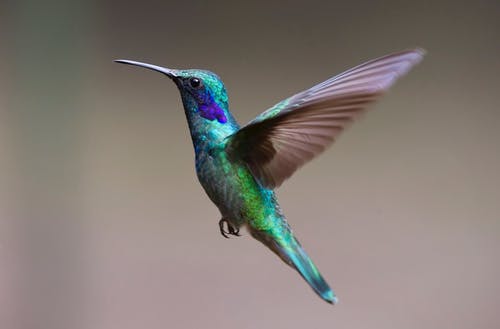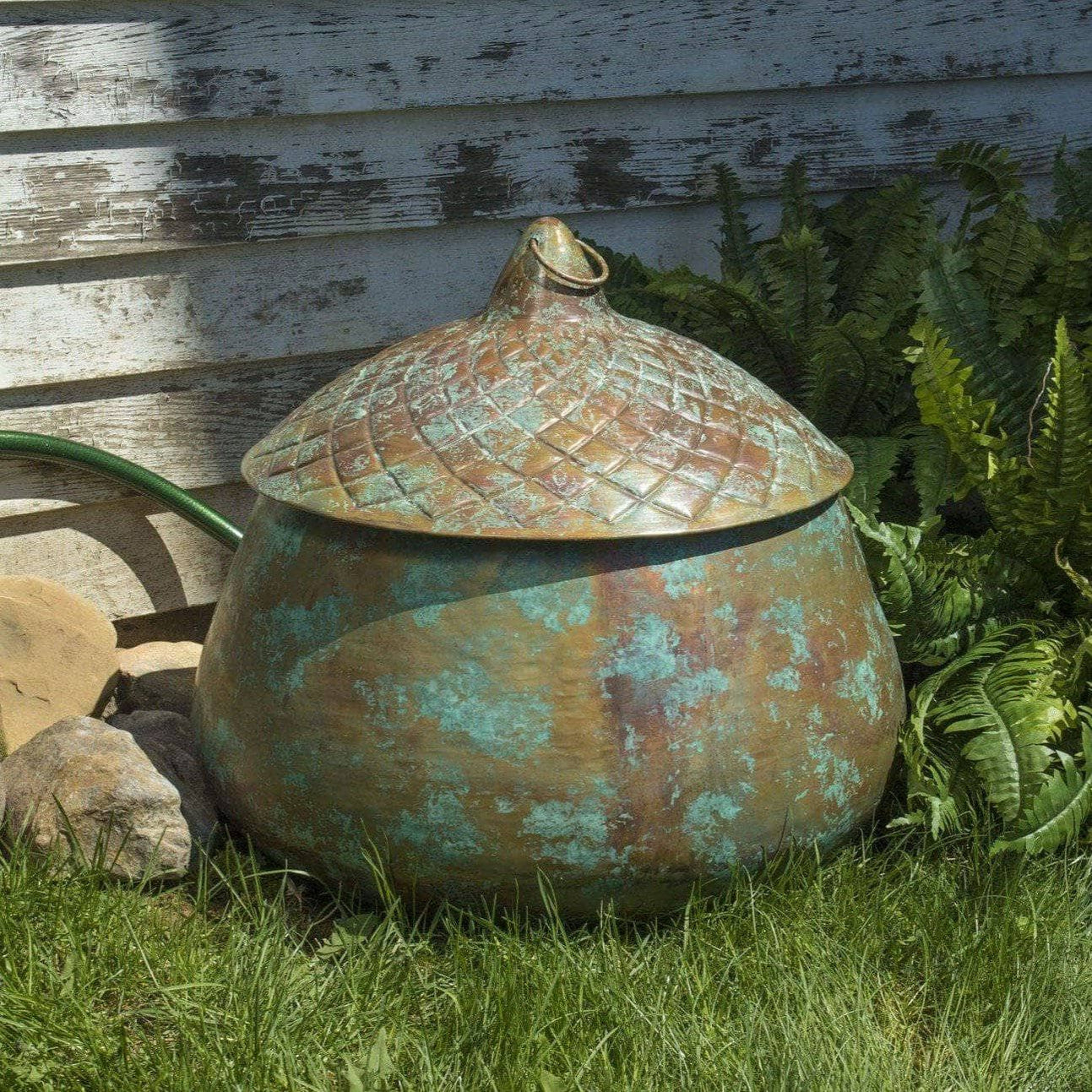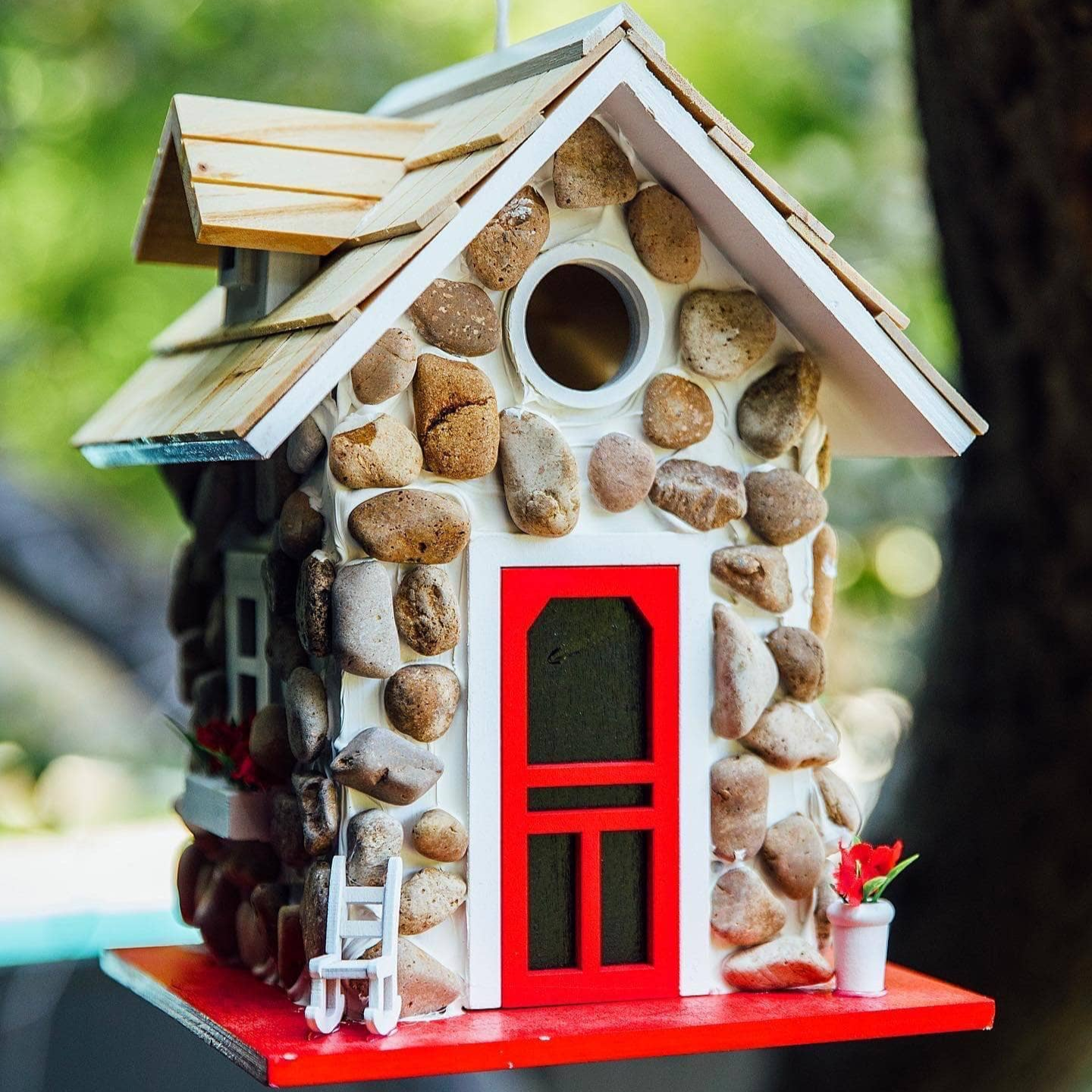
Where to Hang a Hummingbird Feeder
Share
Here at Happy Gardens, we believe that hummingbirds are known as the flying jewels of any garden. So, it's no wonder attracting hummingbirds to your yard is such a high priority. And that's why many of our customers spend so much time picking out the perfect feeders and bird baths for hummingbirds.
While it's essential to find a design that matches your aesthetic, additional factors should go into making your selection. For example, keeping your hummingbird feeder clean is crucial to the health of these tiny creatures—and something to keep in mind while shopping around. Equally as important? Ensuring you keep ants out of your hummingbird feeder.
But today, we're going to talk about something else that's really essential if you want hummingbirds to flock to your garden: where to hang a hummingbird feeder. We're going to walk you through, in detail, where to hang a hummingbird feeder and why it is so vital for your garden—and the hummingbirds who call it home. (Or at least stop by to visit.)
Why Hummingbird Feeder Placement Matters
No matter what family of birds (or, more specifically, hummingbirds) you are working with, moving a feeder to a new location can make a world of difference to the population. So, it should come as no surprise that moving a hummingbird feeder can be equally as impactful.
When figuring out where in your garden to place your hummingbird feeder, you'll have to think beyond the best line of sight for observers. Here are a few considerations to keep in mind when deciding where to hang a hummingbird feeder.
Leaks
A poorly positioned hummingbird feeder could result in leaks, causing nectar to spill out onto the feeder and the ground below. Unfortunately, hummingbirds aren't the only critters interested in the sweet nectar from the feeders. Insects and pests can be attracted to the sugary substance, proving to be an annoyance for you if it gets out of hand. (Which, trust us, it will.)
Spoiling

Factors such as leakage or direct sunlight can impact how quickly your nectar spoils. And, since you're providing hummingbirds with a food source, it's your job to ensure that the food source is safe and healthy. As such, you'll want to make sure you hang hummingbird feeders in a way that keeps your nectar fresh for longer.
Predators
Excess nectar in the surrounding areas can also attract larger predators—and that's bad news for your hummingbirds. Additionally, if you expose the hummingbird feeder completely, hummingbirds are at risk every time they visit your feeder. And that's not what we want at all.
Visibility
Visibility is also important because you'll want to keep your feeder in an area that you can check on regularly. This step helps to ensure the nectar stays filled and free from spoilage—and that the hummingbirds who stop by are safe.
Convenience
Because you'll need to keep your hummingbird feeder refilled and clean it regularly, you'll want to make sure it's located in a relatively convenient location. While this shouldn't be the sole determining factor of your hummingbird feeder placement, it shouldn't be ignored either.
Tips for Placement
Now that you have a better idea of why hummingbird feeder placement is so crucial to the health and safety of the birds, here are a few tips to help guide you in the right direction.
Near Flowers

Although you might think that a feeder is enough to attract local hummingbirds, you can take it one step further by planting both early and late blooming flowers. Flowers with a trumpet shape, like petunias, gladiolas, or fuchsias, are great options to consider adding to your garden to help entice the birds. Then, you can hang your bird feeder near the flowers to help boost your chances of attracting them to the nectar.
Near Water
Hummingbirds will use bird baths just as other birds do. If you happen to have a bird bath or a garden pond in your yard, you might want to keep your feeder close to help encourage the birds to stop by your feeder more frequently.
Well-Spaced
If you've watched hummingbirds feed before, you've probably noticed they mostly hover. To be able to feed comfortably, hummingbirds should have enough space to move around the feeder freely. They also tend to prefer the ability to fly around the feeder to ensure they view all angles to protect them from the threat of nearby predators.
Off the Ground
Not surprisingly, you'll want to keep your feeder off the ground. As a rule of thumb, try to keep your feeder anywhere from five to six feet from the ground. Remember that hummingbirds don't naturally feed on treetops, so hanging it too high can discourage feeding. Alternatively, placing your feeder too low on the ground can present other threats as well.
Shaded
Shade is important to help prevent your nectar from spoiling quickly. If your hummingbird feeders are exposed to full sunlight all day, every day, you'll find that you'll have to change out your nectar every other day or so. Instead, opt for a position that is somewhat shaded during the heat of the day. It's better for attracting more birds, too, as shade under a tree is an ideal resting place.
Close
Hang hummingbird feeders close by so you can be sure to enjoy their presence as they stop by for regular feedings. Don't forget, though; this shouldn't be your primary factor when determining where to hang your feeders.
Private
Although many casual gardeners don't know this, hummingbirds can actually become highly territorial and aggressive. Naturally, they will avoid feeders that are in areas with other larger birds. To help provide privacy to the birds, you should make sure to hang your hummingbird feeders away from other bird feeding stations and also place multiple throughout your yard to avoid conflict.
Safe
The last thing you want to do is attract hummingbirds to your yard while simultaneously jeopardizing their safety. These beauties are petite, and they are fast, but it does not stop them from being prey to larger predators. Cats or other predators should not be able to access hummingbird feeders easily.
Another safety concern to consider is windows. While it might be tempting to hang your hummingbird feeders nearby a window so you can watch them, you'll have to be careful about the placement. Feeders should be either far away from windows or very close to windows to help avoid the risk of collisions. Consider a feeder with suction cups, like this Jewel Box Window Hummingbird Feeder, to help keep your hummingbirds safe.
Convenient
Since the responsibility of replenishing and sanitizing the hummingbird feeder will ultimately fall upon you, you'll want to make sure to place it somewhere relatively convenient to you. You should hang your hummingbird feeder somewhere that is easy to reach and easily accessible so that cleaning and refilling it do not become burdensome.
Noticeable
Hummingbirds have excellent eyesight, but that doesn't mean you should hang your hummingbird feeder somewhere deep under a roof or hidden somewhere it can be easily overlooked. Your hummingbird feeder should be able to catch light during some parts of the day, so the colors and reflections attract the attention of the hummingbirds nearby. If you place your hummingbird feeders close by other red things, such as garden decor or flowers, this will also help catch their attention quicker.
Strategic

While it's best not to move your feeder around too much not to confuse the hummingbirds, you can be strategic about your placement. If you find you are having difficulties attracting hummingbirds at first, consider moving your feeder to a more open space that can be easily seen. Once you begin attracting birds and seeing them regularly use your feeder, you can move it to a more desirable location.
For example, if you find that a central location in your garden seems to be the most popular for your feeder, keep it here until you start to see regular feedings. If this location is inconvenient, rest assured you do not have to be committed to it long-term. Slowly but surely, start moving your feeder so that the birds are guided to the newer, more desirable location.
Best Places for Hummingbird Feeders
If you're feeling a bit overwhelmed by all the do's and don'ts of hanging your feeder, don't. It is a simple process once you get the hang of it. Plus, we've broken it down even further to give you a list of some of the best places for hummingbird feeders.
In a Hummingbird Garden
The ideal location for a feeder would be in a hummingbird garden. Here you will have nectar-rich blooms scattered throughout your space along with insects to help fill the protein demands of the birds' diet. You can have multiple feeders scattered throughout, offering a bit of a sanctuary for the magical creatures.
Near a Kitchen Window
Another great option is to place your feeders near a kitchen or office window. You'll get great views of feedings as they occur naturally throughout the day. If you opt for window options, be sure to remember some of the tips to help the hummingbirds avoid a collision.
Hanging From an Awning
Hanging your feeder from an existing structure around your home, such as an awning, gazebo, or gutter, is another excellent option. Here the feeders are shaded during the hottest portion of the day but still have enough light to reflect and attract the birds.
Under a Protective Cover
Anywhere you decide to place your hummingbird feeder, always be sure it is within 10 to 12 feet of a protective cover. Allowing them a nearby place to rest puts them at ease and encourages them to come back to your feeding location more frequently.
Where to Buy Hummingbird Feeders
When it comes to finding the best feeder for your garden, you'll want to keep in mind the different considerations of where to hang your hummingbird feeder that make sense for your setup. Now that you have a better idea, you can begin the search for your very own. Luckily, it's simple enough to find a hummingbird feeder to fit your budget and style.
Feeling Thrifty
If you're on a tight budget, not to worry. You can try looking for hummingbird feeders at your local swap meets, flea markets, or garage sales to start. If you're still having trouble, you can always browse antique shops to see what unique pieces you might find.
Online Browsing
Thankfully, you can browse through deals from the comforts of your own home, thanks to online marketplaces like OfferUp or Facebook Marketplace. The perfect hummingbird feeder is just a few clicks away, thanks to local deals in your area.
Happy Gardens Store
Of course, you don't have to compromise quality while shopping online for affordable deals. The Happy Gardens store is your one-stop shop for all your garden needs, including a wide range of artfully crafted hummingbird feeders.
About Happy Gardens
At Happy Gardens, you can browse through our online collection, where you will find artistically constructed garden decor and merchandise perfect for any outdoor space. Whether you've been searching for that quaint hummingbird feeder, timeless wall art piece, or inspired rain chain, rest assured, Happy Gardens has exactly what you're looking for. Take comfort in knowing you will only find handcrafted and hand-selected pieces that have been chosen with love on our site.
As you search through our countless unique collections, you can slip into a daydream about your ideal garden landscape. Happy Gardens has various adored and top-rated products, including everything you need from one-of-a-kind wind spinners, original garden ornaments, creative rain gauges, and so much more to flawlessly accent your outdoor areas. The latest Happy Garden offerings even include our line of merchandise, with fun and exciting gifts available year-round. Shop for the garden lovers in your life through our adorable coffee mugs, wine glasses, and tote bags.
Keep up with the latest and greatest happenings here at Happy Gardens by simply joining our mailing list. If you're looking to be inspired or learn some new gardening tips and tricks, follow us on Instagram, Facebook, and Pinterest.
If you're feeling a bit overwhelmed and unsure where to start, don't worry. We've got you covered! If you need some guidance in selecting your quintessential garden art piece for your yard, reach out to us via chat. We're happy to help!










